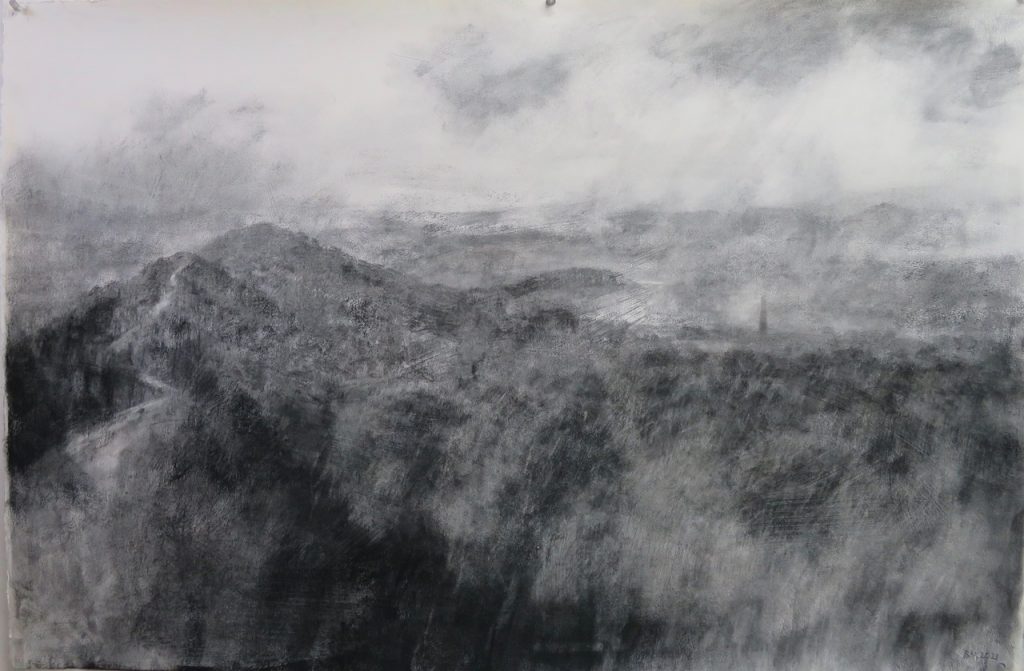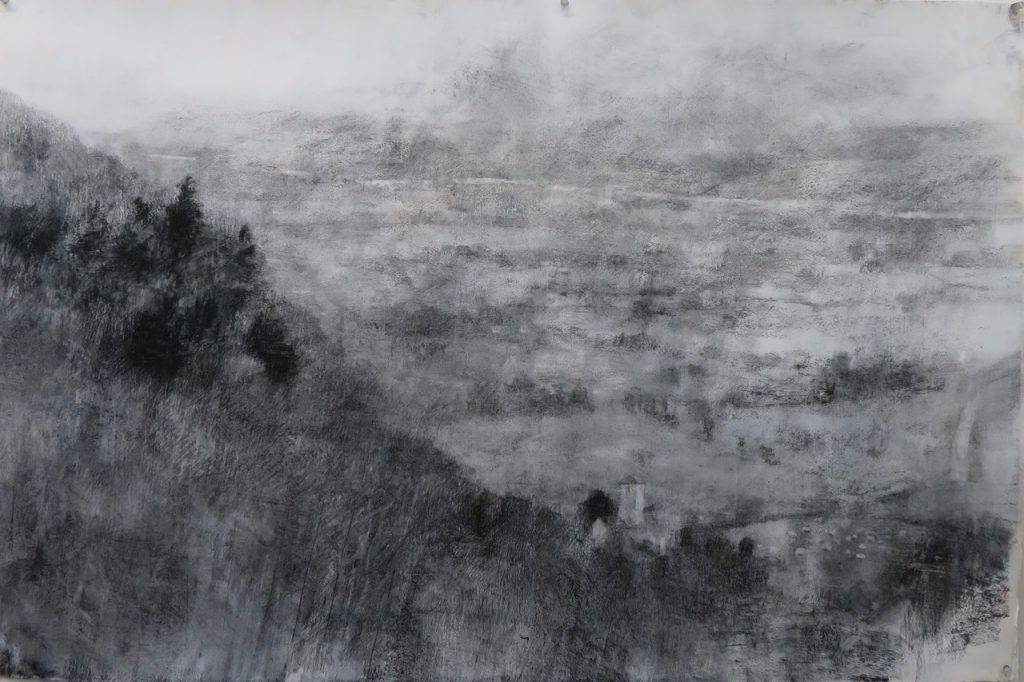

These new drawings have been made since the start of 2021 during the 3rd Covid Lockdown. They are 32 x 48 ins, charcoal on primed Arches paper. Priming the heavy paper with random brushstrokes produces a surface which the charcoal slides over and gives a more painterly effect which I am quite liking at the moment.
The drawings have been inspired by a series of poems by Catherine Swire in which she explores the layers of history in this ancient and romantic landscape of the Malvern Hills. They are not intended as illustrations to the poems but as my own response to her evocation of what she calls “trauma’s relics”. She writes that she is “drawn to the idea that land, the ground itself, has a kind of voice that demands an immanent kind of listening”. The Iron Age fort known as the British Camp from where these two views were taken is reputed to be the site of Caractacus’s last stand against the invading Romans. The Obelisk at Eastnor is visible in the top drawing, a memorial to a son lost in France in 1759. Indeed the loss of young men is one of her themes, from the medieval stained glass in Little Malvern Priory which can be seen in the foreground of the second drawing (the only contemporary portrait of the young Edward V) to the tomb of Prince Arthur in Worcester Cathedral. These are winter landscapes and the flooded Severn coming down from Worcester is seen in the distance in this drawing.
I want to continue with more drawings when the restrictions of lockdown are lifted and I can get out and about more. The site of the Battle of Worcester for example at the confluence of the Teme and Severn, the chained library at Hereford Cathedral, the World War 2 Listening Station at Guarlford all feature in the poems.
I find myself in tune with the premise of the poems, that we see landscape through a prism of memory, folklore, history and that it is a palimpsest of centuries of human intervention and activity.
21 February 2021